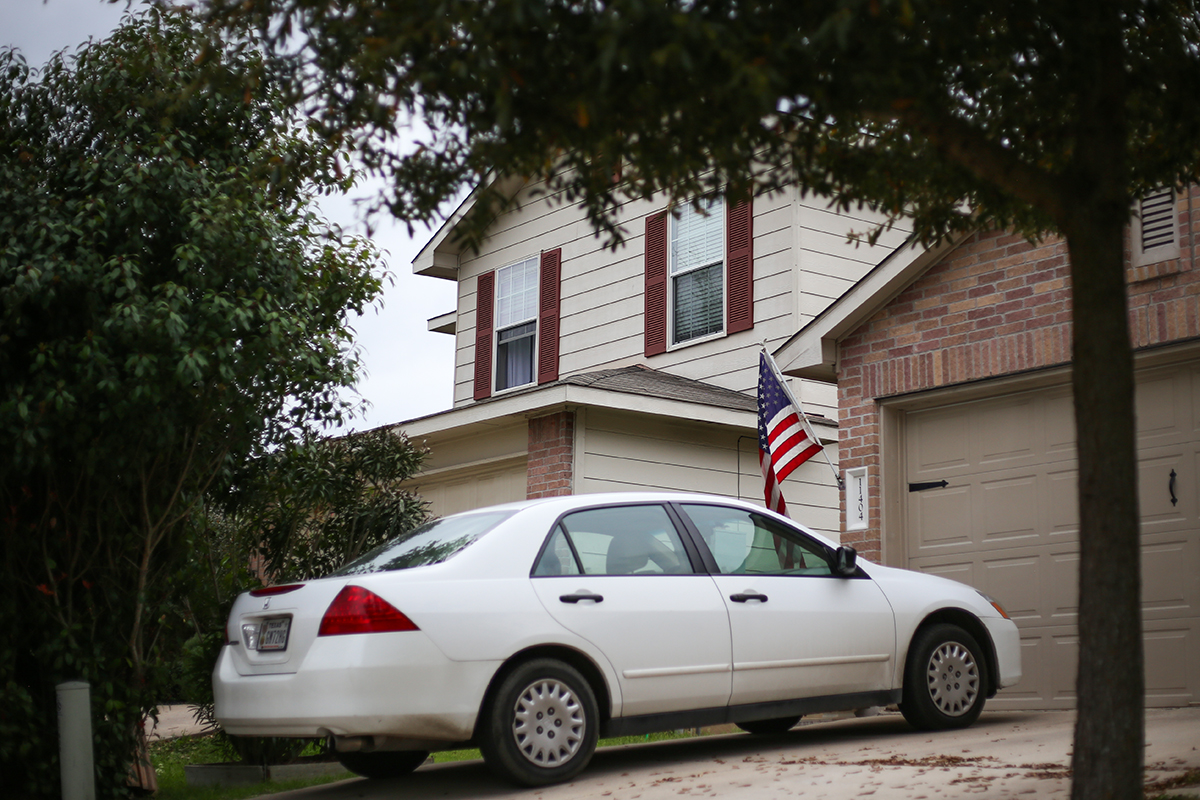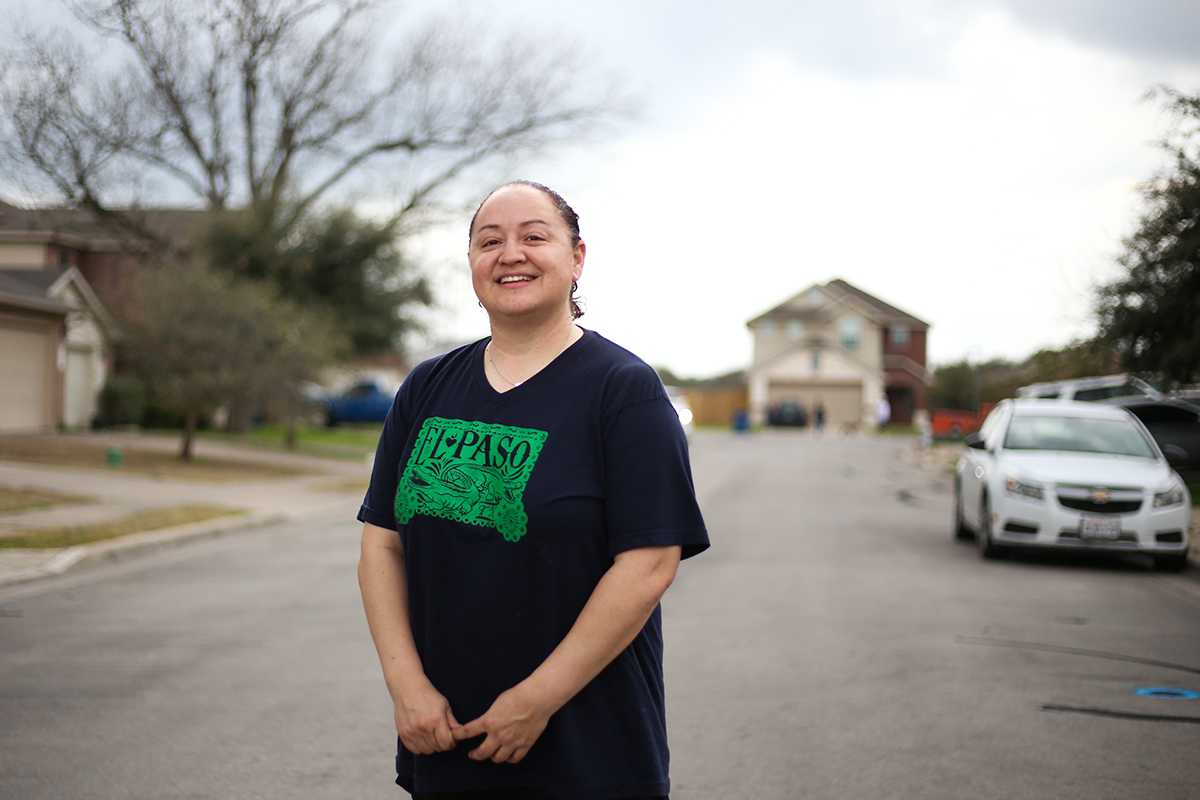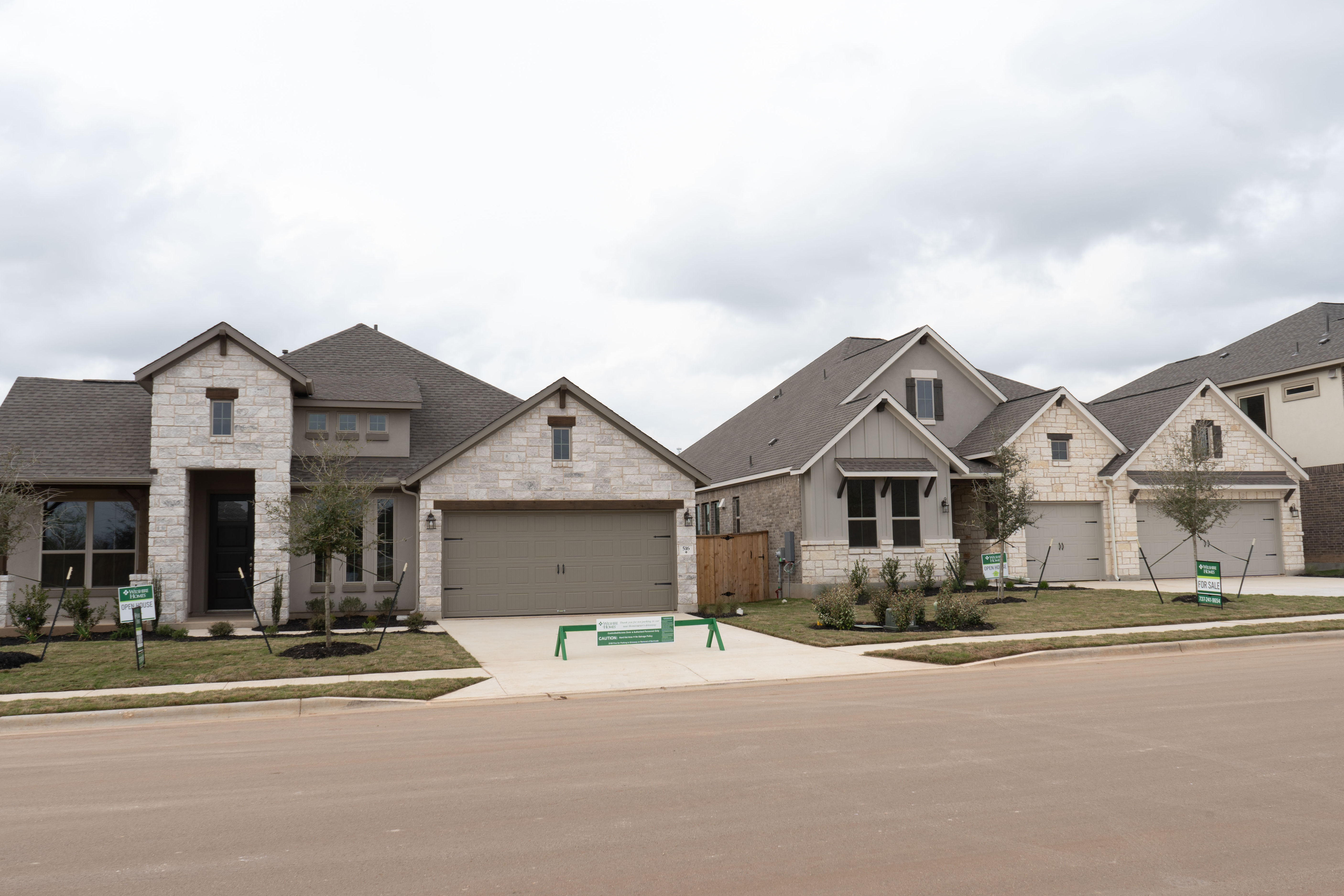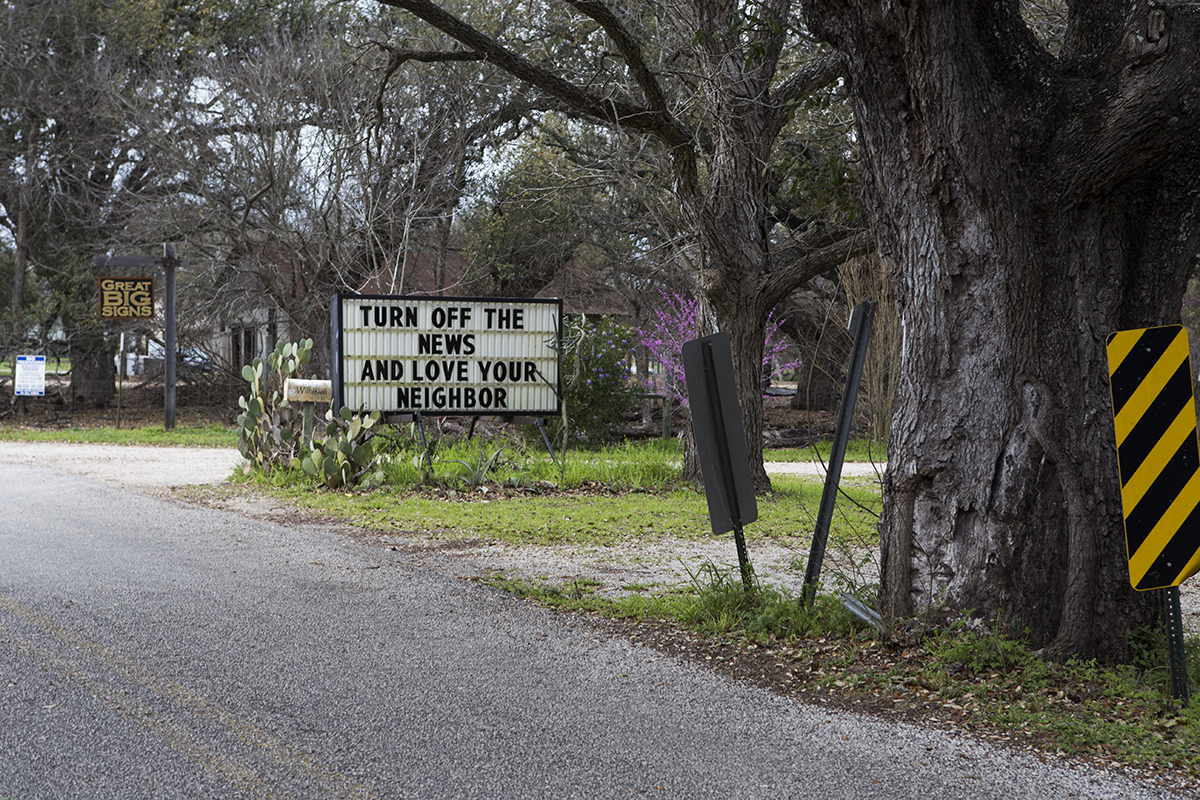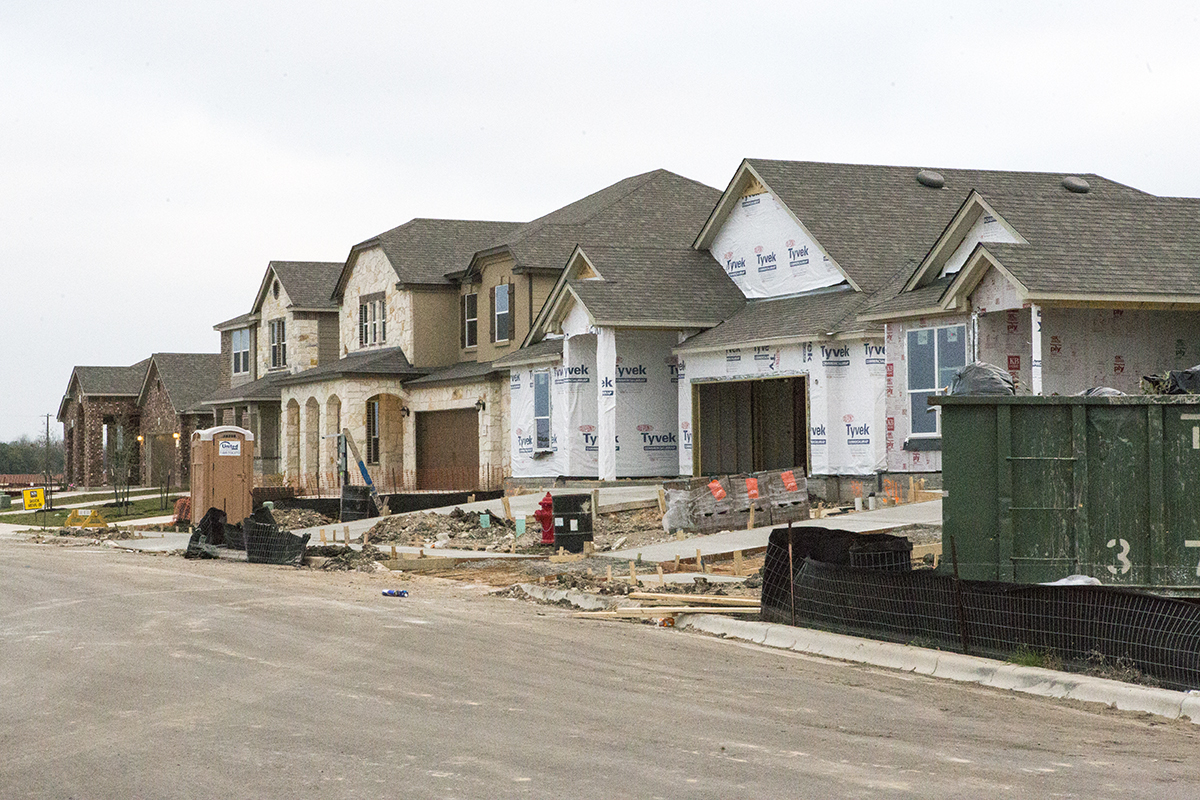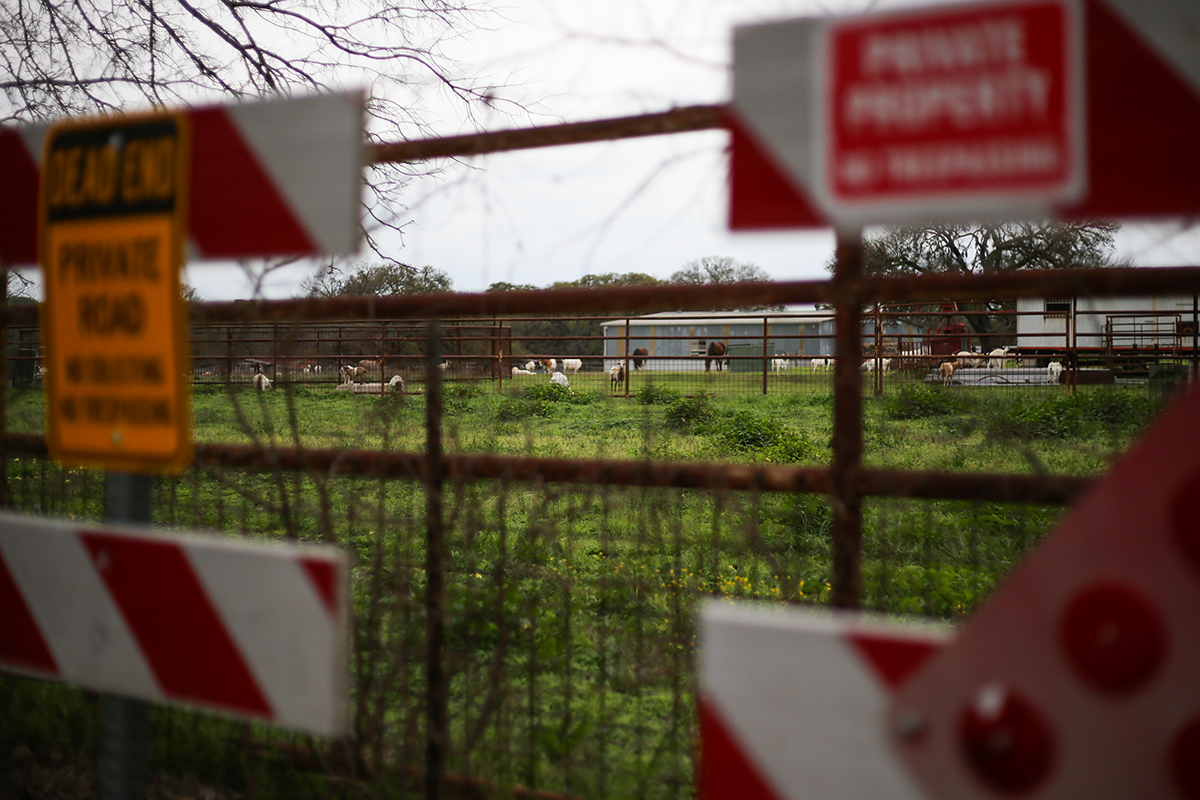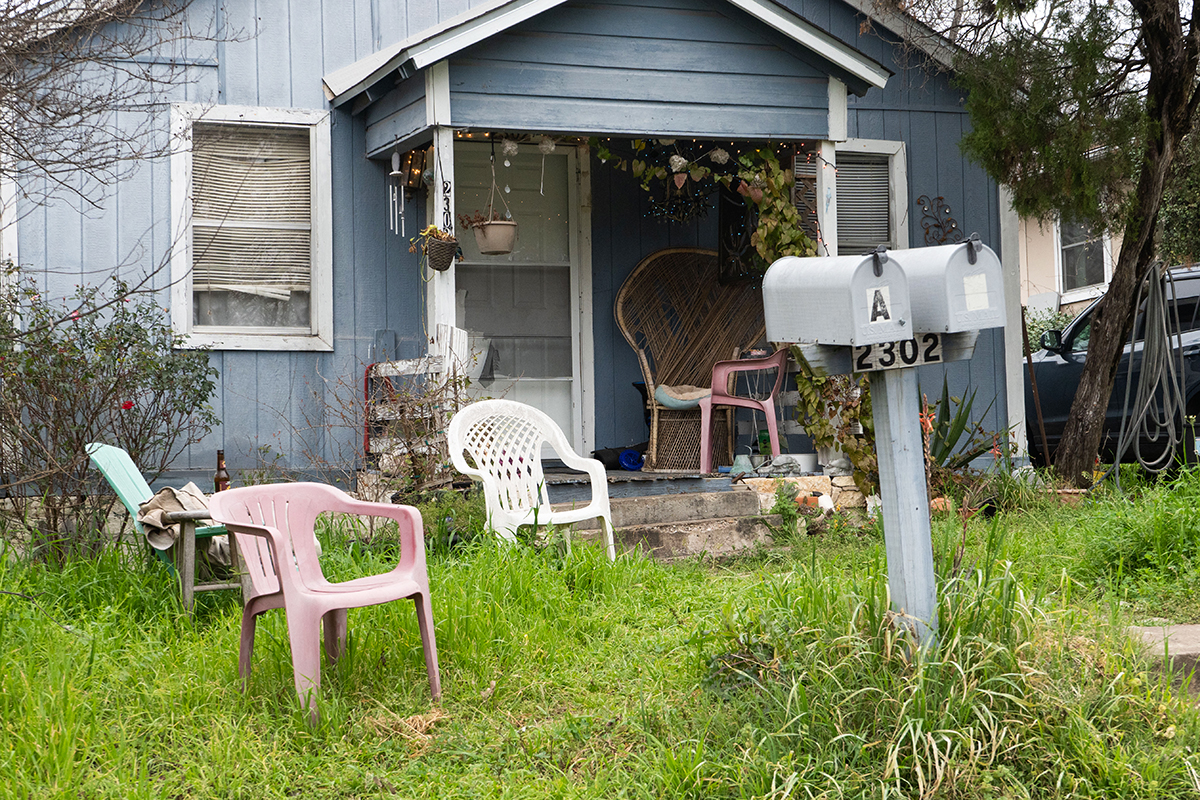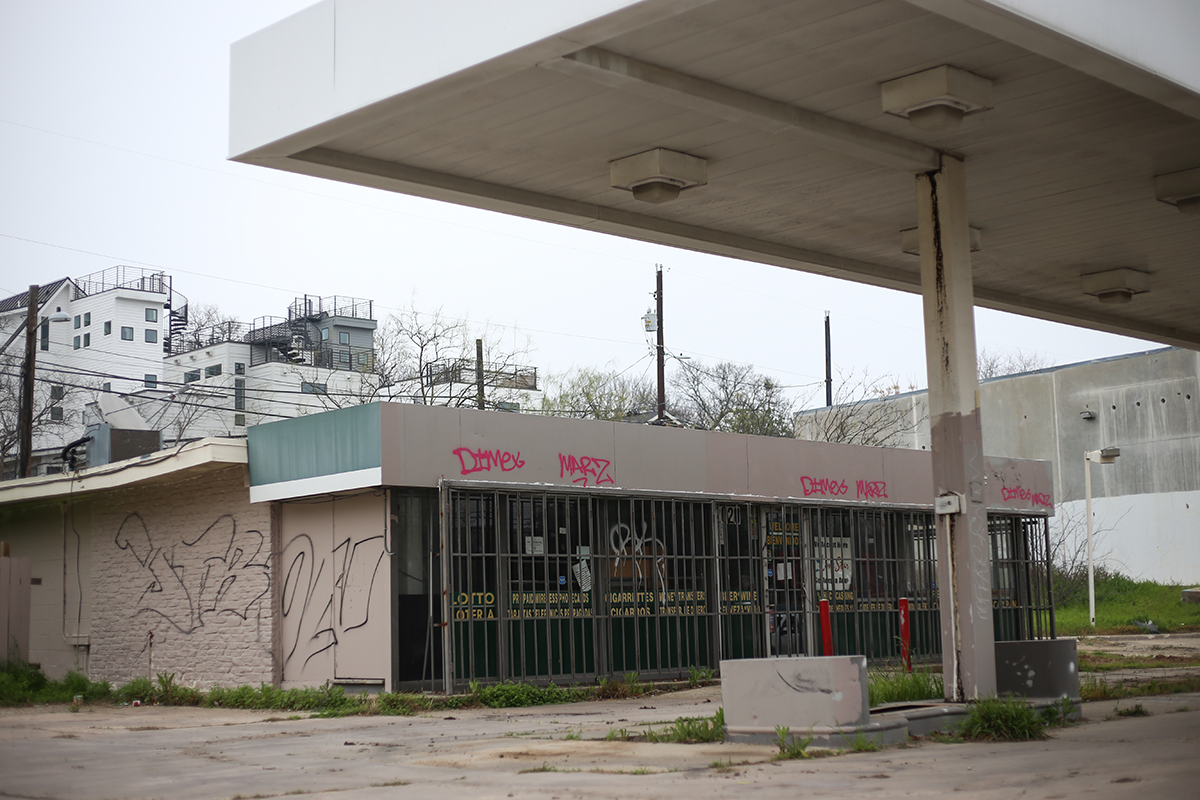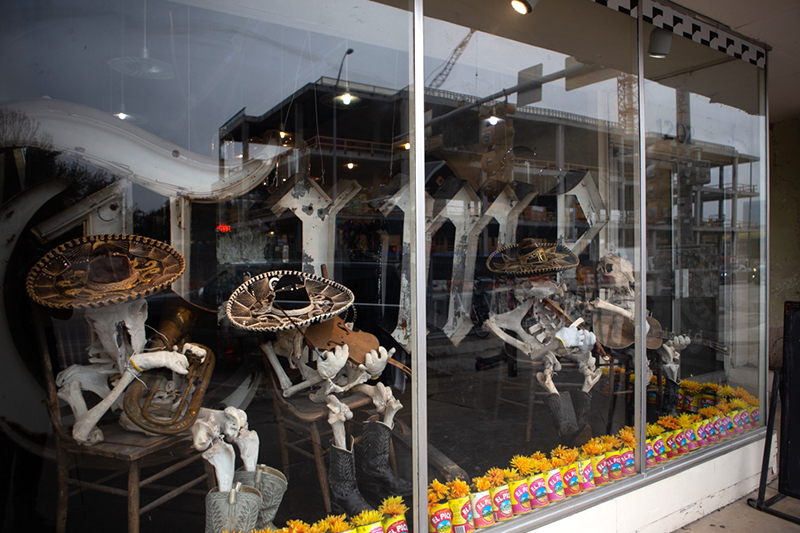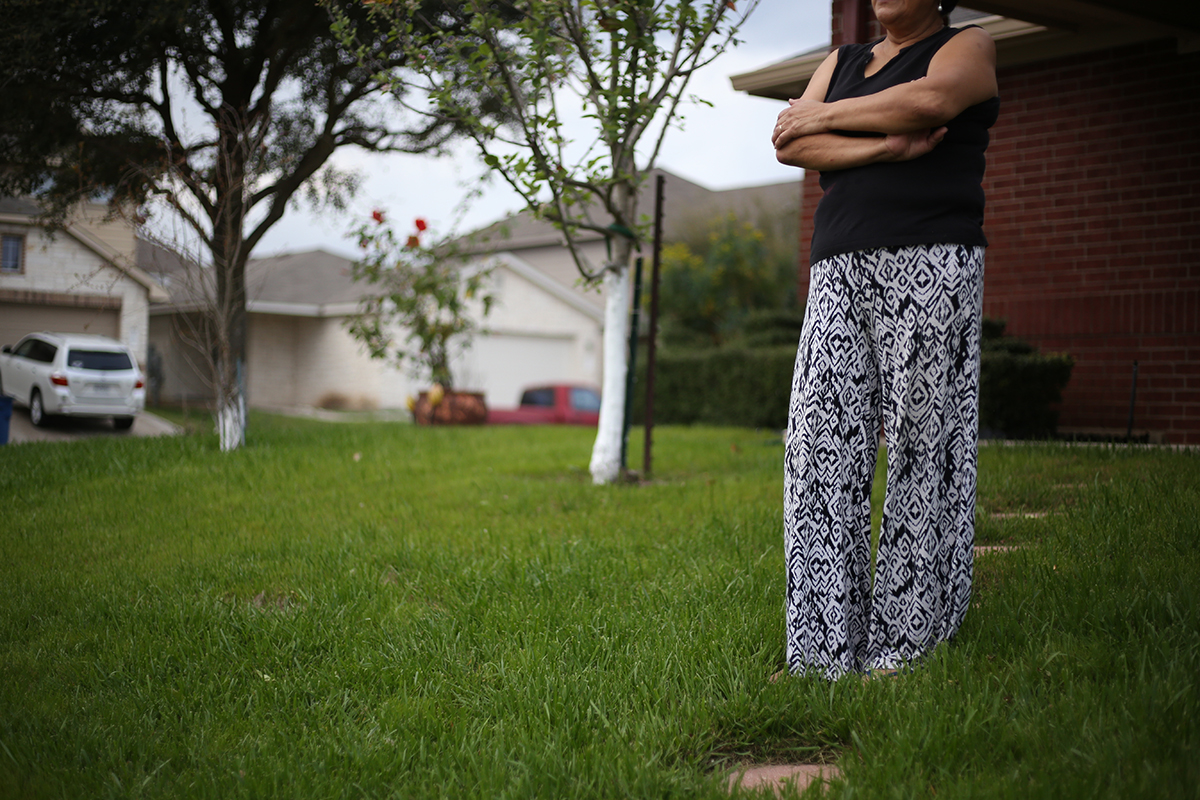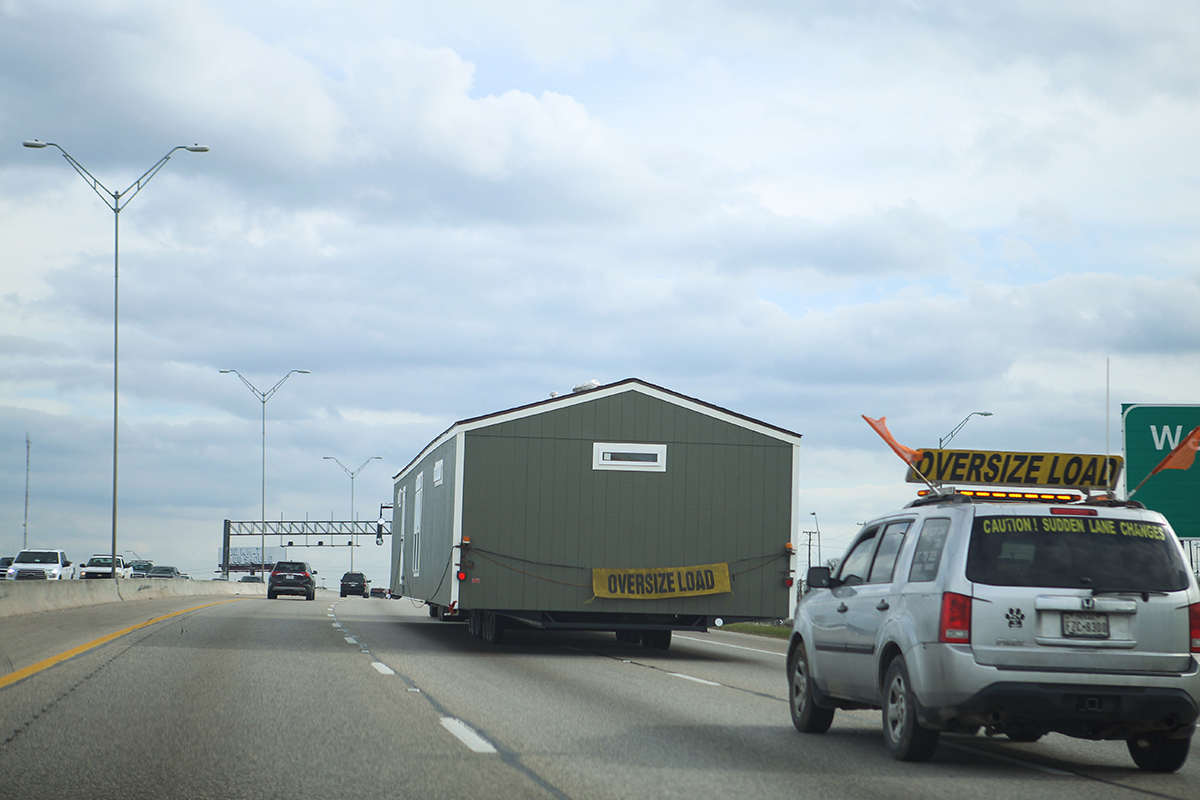U.S. House Democrats Target Six Texas Districts for 2020, Face Uphill Battle
By Katherine Corley
Reporting Texas
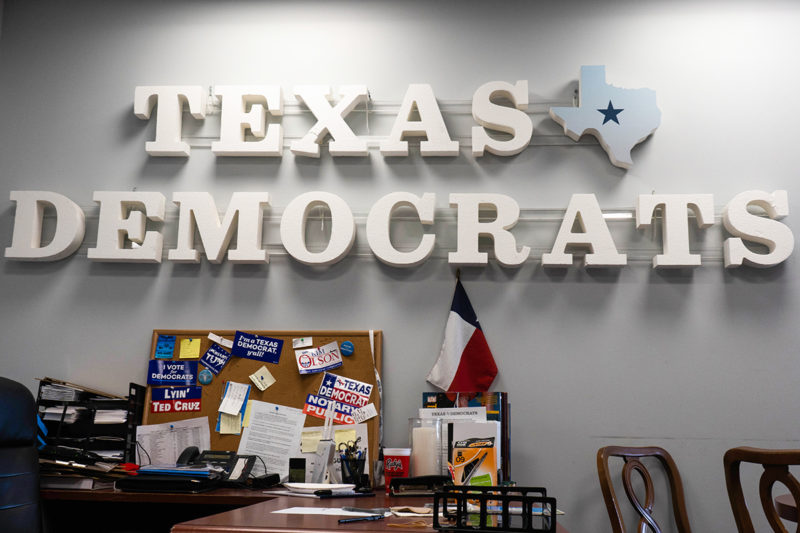
The Texas Democratic Party headquarters is seen on April 4, 2019 in Austin, Texas. Nadia Elchmaissani/Reporting Texas
Texas Democrats are optimistic about their chances to pick up seats in the U.S. House of Representatives in 2020, but political scientists say making gains in the state will be no small feat.
“Texas is ground zero for us in the next election,” House Speaker Nancy Pelosi, D-California, said during a Travis County Democratic Party fundraising dinner on March 4.
About a month before Pelosi’s declaration, the Democratic Congressional Campaign Committee — the official campaign arm of Democrats in the U.S. House of Representatives — identified congressional districts around the country that it will target to flip blue. Six of the districts are in Texas — in the suburbs of Dallas, Houston, Austin, San Antonio and El Paso. The DCCC calls its plan March Forward. To kick off the effort, the DCCC is hiring organizers to deploy in the targeted swing districts.
Republicans have dominated Texas politics for the last quarter century. Currently the Texas delegation to the U.S. House comprises 23 Republicans and 13 Democrats. Since the 2018 midterm elections — when Democrats flipped two districts in Texas and Beto O’Rourke ran a competitive campaign for U.S. Senate — Democrats have been enthusiastic about their chances in the Lone Star State. They point to demographic changes in the six targeted congressional districts as a major reason for optimism.
Election experts say demographic shifts might have helped Dems in 2018, but increased voter turnout — likely a response to enthusiasm created by O’Rourke and the polarizing nature of President Donald Trump — was a bigger reason for Democratic gains in 2018.
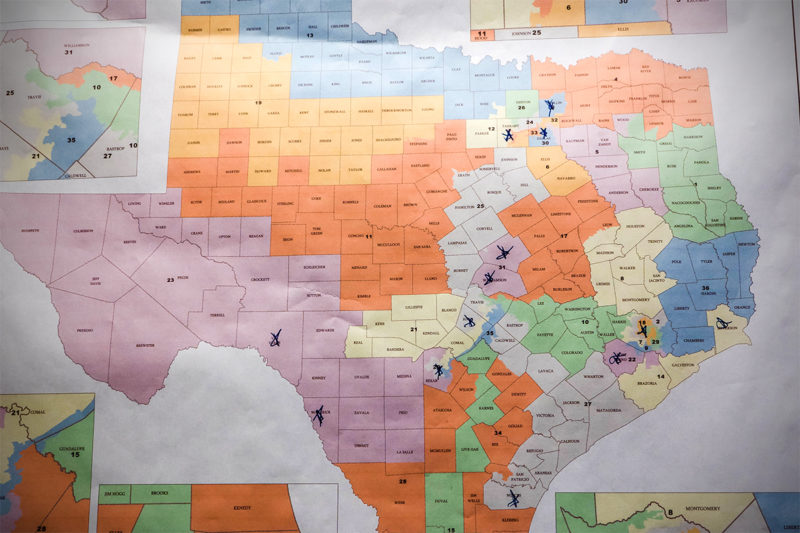
A map of the congressional districts of Texas is seen in the Texas Democratic Party headquarters on April 4, 2019, in Austin, Texas. Nadia Elchmaissani/Reporting Texas
O’Rourke’s dynamic run for Senate energized the Texas electorate and drove massive voter turnout in 2018, says Joshua Blank, manager of polling and research at the Texas Politics Project, an educational center at the University of Texas that annually conducts three to four statewide polls with the Texas Tribune.
“People less inclined to vote tend to be less white, younger, and have lower socioeconomic status, and be more amenable to the Democratic message,” Blank said. When less-likely voters turn out to cast their ballot, Democratic candidates in districts around the state benefit, he added.
In each of the six districts targeted by the DCCC, the Democratic candidate in the 2018 midterm election lost by less than 5 percent of the vote. Democrats say the districts have one major, politically important similarity — they are mostly located in the suburbs, which are becoming increasingly populated by non-white racial and ethnic groups — voters who overwhelmingly lean Democratic, per a 2018 AP VoteCast poll. Of the 40 Congressional seats Democrats picked up nationally in the 2018 midterms, 37 were primarily or partially suburban, according to CityLab’s Congressional Density Index.
The demographic change in Texas is real. Between 2000 and 2017, Texas shifted from a majority-white to a majority-minority state. The state added nearly 4.5 million Hispanic or Latino residents and about 1 million black residents, according to the U.S. Census. During the 2018 midterms, key issues driving minority votes for Democrats nationwide included racial equity and concern that Trump and the Republicans are using “toxic rhetoric” to divide the country, according to the 2018 American Election Eve Poll.
Heated opposition to President Trump also drove voter turnout in Texas, says Mark Jones, fellow in political science at the Baker Institute of Public Policy at Rice University.
“Donald Trump is a millstone around the neck of Texas Republicans,” Jones said. “He helps mobilize Democrats to turn out to vote, and he also alienates some reliable Republican voters.”
A mix of strong Democratic candidates and overconfident Republican candidates in most of the six districts being targeted by House Democrats rounded out a perfect storm of left-leaning factors, Jones says. With the exception of the candidacy of U.S. Rep, Will Hurd, R-San Antonio, in swing district Texas 23, which stretches from the Mexican border to San Antonio, “Republicans ran lackluster, almost embarrassing race campaigns,” Jones added.
Sam Pohl, communications director for the Texas Republican Party, attributes the closeness of the 2018 results to Beto O’Rourke’s energetic campaign as well as Republicans taking the races for granted. “We’re trying to figure out ways that we can shift the narrative and get our point across more effectively,” Pohl said.
The state’s increasing proportion of Asian-American immigrants is also a boon for Democrats, says Renee Cross, senior director of the Hobby School of Public Affairs at the University of Houston. Cross said that the Asian-American population in Texas, which increased almost 800,000 from 2000 to 2017, tends to be highly educated and often leans Democratic.
“A 5 percent Asian-American population [in a congressional district] can make a big difference in a race that is decided by four or three or two points,” Cross said.
Despite their belief that demographics are increasingly working in their favor, Democrats in the six targeted districts and in statewide elections in Texas still face an uphill battle, says Jay Aiyer, political science professor at Texas Southern University.
“The state is certainly more competitive than it has been. But the simple fact is, [Democrats] still weren’t able to win a single statewide race” in 2018, Aiyer said. Democrats “probably could break through [in 2020] and if that’s the case, … it’d be fair to then say the state has become purple. But until that happens, I think it’s a little bit premature.”
Democrats say they remain undeterred. “Texans are ready for change. … We’re going all in,” said Brittany Switzer, senior brand director for the Texas Democratic Party.
“We’re going to deliver Texas in 2020,” she added.
